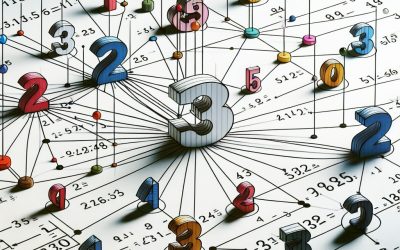Explore the World Through Geography, Natural Resources & Daily History
Clear, reliable and engaging guides that help you understand our planet — from UK geography education to global natural resources and On This Day history events.
Explore, discover, and learn about the wonders of our world! At Earth Site, we’re passionate about bringing geography, history, and science to life for curious minds of all ages. Whether you’re delving into historical events, uncovering the mysteries of the natural world, or seeking interactive resources, you’re in the right place.
Here, you can uncover the stories behind historical events, explore the natural wonders of our planet, and gain valuable insights into how the Earth’s systems shape our daily lives. From the towering peaks of mountain ranges to the far-reaching impacts of human innovation, we aim to make every topic both engaging and informative.
Start your journey of discovery with us today, and let’s make learning an adventure!
What We Cover
Earth Site brings together engaging and accessible educational content designed to help you understand the world, its history, and its natural systems.
🌍 Geography Education (UK & Worldwide)
We publish clear, easy-to-understand geography resources for students, teachers and curious learners. Our guides support geography education in the UK and cover physical geography, climate, ecosystems, population, and global development.
⛏️ Natural Resources & Environmental Geography
Explore detailed country profiles covering natural resources, mining, energy, geology and global environmental challenges. We show how nations manage minerals, water, land and ecosystems, and why these resources matter.
📅 On This Day in History
Every day has a story. Our On This Day history series features major events, anniversaries, traditions, and cultural milestones from around the world — with timelines, context, and fun facts.
TIMELINE
The Looming Danger of Lead (Pb) Poisoning: A Wake-Up Call for Britain
Lead poisoning is a serious health issue that occurs when a person is exposed to high levels of lead, a toxic metal. In Britain, lead poisoning has been a concern for many years, with various sources of exposure contributing to the problem. Lead can enter the body through ingestion, inhalation, or absorption through the skin. Once inside the body, it can accumulate and cause a range of health problems. This article will explore the historical use of lead in Britain, its impact on public health, symptoms and health effects of lead poisoning, sources of lead exposure, risks and precautions for children, occupational hazards and safety measures, lead contamination in food and water, environmental pollution, legal regulations and policies, and tips for preventing lead poisoning. Summary Lead poisoning has been a problem in Britain for centuries due to the historical use of lead in various industries. Symptoms of lead poisoning include abdominal pain, headaches, and developmental delays in children. Sources of lead exposure in Britain include old paint, contaminated soil, and lead pipes in older homes. Children are particularly vulnerable to lead poisoning and precautions should be taken to prevent exposure. Legal regulations and policies exist in Britain to limit lead exposure, but individuals and communities can also take steps to prevent lead poisoning. Historical Use of Lead in Britain and Its Impact on Public Health Lead has been used in various industries throughout history in Britain. It was commonly used in plumbing systems, paint, gasoline, and even cosmetics. The use of lead in these products had severe consequences for public health. For example, lead pipes used in plumbing systems...
The Toxic Truth About Thallium (Tl): Understanding its Harmful Effects
Thallium (Tl) is a chemical element that is highly toxic to humans and animals. It is a soft, malleable, and silvery-white metal that is found naturally in the Earth’s crust. Thallium has a variety of industrial uses, including in the production of electronics, glass, and ceramics. However, its toxicity poses a significant risk to human health and the environment. Understanding thallium toxicity is crucial because it can have severe health effects and even be fatal if not properly managed. Thallium poisoning can occur through various sources and routes of exposure, making it important to be aware of its potential dangers. By recognizing the symptoms of thallium poisoning and understanding its mechanism of toxicity, individuals can seek appropriate medical treatment and take steps to prevent exposure. Summary Thallium is a potentially deadly element that can cause severe poisoning. Thallium can enter the body through various sources and routes of exposure. Recognising the symptoms of thallium poisoning is crucial for early detection and treatment. Thallium toxicity can have short-term and long-term health effects on the body. Treatment options for thallium poisoning include chelation therapy and supportive care. How Thallium Enters the Body: Sources and Routes of Exposure Thallium can enter the body through various sources and routes of exposure. Common sources of thallium exposure include contaminated food and water, occupational exposure in industries that use or produce thallium compounds, and accidental ingestion or inhalation of thallium-containing substances. The routes of entry into the body include ingestion, inhalation, and dermal absorption. Ingestion is the most common route of exposure, as thallium can contaminate food and water sources. Inhalation can occur in occupational...
Using Calculators
Calculators have come a long way since the invention of the abacus thousands of years ago. The abacus, which was used by ancient civilizations such as the Egyptians and the Chinese, was a simple device that allowed users to perform basic arithmetic calculations. Over time, calculators evolved and became more sophisticated, eventually leading to the modern-day calculators we use today. The first mechanical calculator, known as the Pascaline, was invented by Blaise Pascal in the 17th century. This device used gears and wheels to perform addition and subtraction. In the 19th century, Charles Babbage developed the Analytical Engine, which was considered to be the first general-purpose computer. It had the ability to perform complex calculations using punched cards. The invention of electronic calculators in the mid-20th century revolutionized the field of mathematics and science. These calculators used transistors and integrated circuits to perform calculations quickly and accurately. They were smaller, more portable, and more powerful than their mechanical counterparts. Today, calculators are an essential tool in various fields such as mathematics, science, engineering, finance, and everyday life. They have made complex calculations easier and more accessible to everyone. Summary Calculators have a long history, dating back to the abacus in ancient times. Basic functions of a calculator include addition, subtraction, multiplication, and division. When choosing a calculator, consider factors such as the type of calculations you will be doing and the size and functionality of the calculator. To maximize your calculator’s potential, learn shortcuts and functions such as memory and percentage calculations. Common errors to avoid when using a calculator include inputting the wrong numbers and forgetting to clear...
Square and Cube Numbers
Square and cube numbers are important concepts in mathematics that are used in various fields such as geometry, physics, and computer science. Understanding these numbers is crucial for solving mathematical problems and for practical applications in real life. Square numbers are numbers that are obtained by multiplying a number by itself. For example, 3 multiplied by 3 equals 9, so 9 is a square number. Cube numbers, on the other hand, are obtained by multiplying a number by itself twice. For example, 2 multiplied by 2 multiplied by 2 equals 8, so 8 is a cube number. Understanding square and cube numbers is important because they have many applications in different areas of study. They are used in geometry to calculate areas and volumes, in physics to describe the motion of objects, and in computer science for various calculations and algorithms. By understanding these numbers, we can better comprehend the world around us and solve complex problems. Summary Square numbers are the result of multiplying a number by itself. Square numbers have properties such as being odd or even and ending in specific digits. Examples of square numbers include 4, 9, and 16. Square numbers have applications in real life such as in measuring area and calculating distances. Cube numbers are the result of multiplying a number by itself three times. Cube numbers have properties such as being odd or even and ending in specific digits. Examples of cube numbers include 8, 27, and 64. Cube numbers have applications in real life such as in measuring volume and calculating the dimensions of objects. The main difference between square and...
Mercury: The Silent Killer Lurking in Your Home
Mercury is a toxic heavy metal that can be found in various forms in our environment. It is a naturally occurring element, but it can also be released into the environment through human activities such as burning fossil fuels and waste incineration. Mercury is particularly dangerous because it can accumulate in the food chain, leading to higher concentrations in fish and seafood, which are commonly consumed by humans. Being aware of the presence of mercury in your home is crucial for protecting yourself and your family from its harmful effects. Exposure to mercury can have serious health consequences, especially for vulnerable populations such as pregnant women, infants, and young children. In this article, we will explore the sources of mercury in your home, the health risks associated with exposure, and how to minimize your risk. Summary Mercury is a dangerous substance that can be found in many household products. Exposure to mercury can lead to serious health risks, including neurological damage. Symptoms of mercury poisoning include tremors, memory loss, and mood swings. Children, pregnant women, and those who eat a lot of fish are most at risk of mercury poisoning. To reduce your risk of exposure, be aware of products that contain mercury and dispose of them properly. Sources of Mercury in Your Home: Identifying the Culprits There are several common household items that may contain mercury. One of the most well-known sources is compact fluorescent light bulbs (CFLs), which contain a small amount of mercury vapor. Other potential sources include thermometers, thermostats, batteries, certain types of switches, and some older electronics such as televisions and computer monitors. To...
Prime Factors
Prime factors are an essential concept in mathematics that play a significant role in various areas of study, including number theory, cryptography, and problem-solving. Understanding prime factors is crucial for solving complex mathematical problems and has practical applications in real life. In this article, we will explore the basics of prime factors, how to find them, their importance in mathematics, their connection to prime numbers, and their applications in different fields. Summary Prime factors are the building blocks of numbers and are essential in mathematics. To find the prime factors of a number, divide it by the smallest prime number until the result is a prime number. Prime factorization is crucial in solving complex problems, such as finding the greatest common divisor or least common multiple. Prime factors play a significant role in cryptography, where they are used to encrypt and decrypt messages. Prime factors have practical applications in real life, such as in computer science and engineering. Understanding the Basics of Prime Factors Prime factors are the prime numbers that divide a given number evenly without leaving a remainder. In other words, they are the building blocks of a number. For example, the prime factors of 12 are 2 and 3 because 2 × 2 × 3 = 12. Prime factors are always prime numbers themselves and cannot be further divided into smaller whole numbers. Properties of prime factors include the fact that every positive integer greater than 1 can be expressed as a product of prime factors in a unique way. This is known as the fundamental theorem of arithmetic. Additionally, the prime factorization of a number...
Prime Numbers
Prime numbers are a fundamental concept in mathematics with a wide range of applications in various fields. They have intrigued mathematicians for centuries due to their unique properties and patterns. In this blog post, we will explore the world of prime numbers, from their definition and properties to their applications in cryptography, computer science, and everyday life. We will also delve into the history of the search for the largest prime number, the role of prime numbers in mathematics and science, and the unsolved problems and current research in prime number theory. Summary Prime numbers are numbers that can only be divided by 1 and themselves. The Sieve of Eratosthenes is a method for finding prime numbers by eliminating multiples of smaller primes. Prime numbers are important in cryptography because they are used to create secure encryption keys. The distribution of prime numbers follows patterns and conjectures, but there is still much research to be done in this area. The largest known prime number has over 24 million digits and was discovered in 2018. What are Prime Numbers and How are They Defined? Prime numbers are natural numbers greater than 1 that have no divisors other than 1 and themselves. In other words, they cannot be divided evenly by any other number except for 1 and the number itself. For example, 2, 3, 5, 7, and 11 are all prime numbers. Prime numbers have several interesting properties. One of the most notable properties is that every natural number greater than 1 can be expressed as a product of prime numbers in a unique way, known as the fundamental...
Multiples
Multiples are an important concept in mathematics that is used to understand and solve various problems. In simple terms, multiples are the numbers that can be divided evenly by another number. For example, the multiples of 3 are 3, 6, 9, 12, and so on. Understanding multiples is crucial in mathematics as it helps in various mathematical operations such as finding factors, simplifying fractions, and determining the least common multiple. Summary Multiples are numbers that can be divided by another number without leaving a remainder. To identify multiples of a number, simply multiply it by other numbers. Prime numbers have only two multiples: 1 and themselves. Common multiples are numbers that are multiples of two or more numbers, while the least common multiple is the smallest common multiple. Multiples have various applications in mathematics, including in fractions, decimals, and ratios. Identifying Multiples of a Number A multiple of a number is any number that can be obtained by multiplying that number by another whole number. For example, the multiples of 4 are 4, 8, 12, 16, and so on. To find the multiples of a number, you can simply multiply the number by different whole numbers and list down the results. Identifying multiples is important in problem solving as it helps in determining patterns and relationships between numbers. For example, if you are trying to find the next number in a sequence, knowing the multiples of a certain number can help you identify the pattern and predict the next number. Multiples of Prime Numbers Prime numbers are numbers that are only divisible by 1 and themselves. Examples of prime...
Estimation and accuracy
Estimation is the process of predicting or approximating a value or outcome based on available information. It is an essential aspect of decision-making in various fields, including business and industry. Accuracy in estimation refers to the degree of closeness between the estimated value and the actual value. Accurate estimation is crucial as it provides a foundation for making informed decisions and planning for the future. Summary Estimation is the process of predicting or approximating a value or outcome. Accurate estimation is crucial for success in business and industry. There are various techniques for estimation, including expert judgement and statistical analysis. Factors that affect estimation accuracy include data quality, assumptions, and biases. Common errors in estimation can be avoided by using multiple techniques and validating assumptions. Importance of Accurate Estimation in Business and Industry Inaccurate estimation can have significant consequences for businesses and industries. It can lead to financial losses, missed deadlines, and poor resource allocation. For example, if a construction project is estimated to take six months but ends up taking a year, it can result in increased costs, delayed revenue generation, and damage to the company’s reputation. Accurate estimation, on the other hand, enables businesses to make realistic plans, allocate resources effectively, and meet customer expectations. Accurate estimation also has several benefits for businesses and industries. It allows for better budgeting and cost control, as organizations can accurately predict expenses and allocate funds accordingly. It helps in resource management by ensuring that the right amount of resources is allocated to each task or project. Accurate estimation also enables businesses to set realistic goals and timelines, which increases the...
Calculations with money
Understanding money calculations is an essential skill that everyone should possess. Whether you are managing your personal finances, running a business, or simply making everyday purchases, being able to accurately calculate and understand money is crucial. In this article, we will explore various aspects of money calculations, including currency denominations, basic arithmetic operations, discounts and sale prices, VAT calculations, currency conversion, interest rates and loan repayments, budgeting and managing personal finances, income tax calculations, profit and loss calculations in business transactions, and the use of spreadsheets and financial software for money calculations. Summary UK currency denominations include pounds (£), pence (p), and notes of various values. Basic arithmetic operations for money calculations include addition, subtraction, multiplication, and division. To calculate discounts and sale prices, subtract the discount percentage from the original price. VAT (Value Added Tax) is a tax on goods and services in the UK, currently set at 20%. Converting currencies for international transactions involves using exchange rates to determine the value of one currency in another. Understanding currency denominations in the UK In the United Kingdom, the currency is the British pound (£). The pound is divided into 100 pence (p). The commonly used coins in the UK are the 1p, 2p, 5p, 10p, 20p, 50p, £1, and £2 coins. The notes in circulation are £5, £10, £20, and £50 notes. It is important to familiarize yourself with these denominations to ensure that you can accurately identify and use them in transactions. To identify different denominations of coins and notes, you can look for specific features such as the size, color, and design. For example, the £1...
Uncovering the Riches of Gold: Exploring the Glittering World of Au
Gold is a metal that has captivated human beings for centuries. Its historical, scientific, economic, cultural, and environmental significance cannot be overstated. From ancient civilizations to modern technology, gold has played a crucial role in shaping our world. In this blog post, we will explore the various aspects of gold and delve into its rich past, unique properties, economic importance, mining process, craftsmanship, investment potential, cultural significance, environmental impact, future prospects, and the myths and legends that surround it. Summary Gold has a rich historical significance, dating back to ancient civilizations such as the Egyptians and Romans. The unique properties of gold, including its malleability and conductivity, make it a valuable material in various industries. Gold is an important commodity in the global market, with demand driven by factors such as jewellery, technology, and investment. The process of mining for gold involves various stages, including exploration, extraction, and refining. Goldsmithing is a skilled craft that involves shaping and manipulating gold into intricate jewellery designs. Investing in gold can provide benefits such as diversification and a hedge against inflation, but also carries risks such as price volatility. Gold has played a significant role in art and religion throughout history, with examples ranging from ancient artefacts to modern-day religious symbols. The environmental impact of gold mining is a concern, but the industry has made efforts towards sustainability through initiatives such as responsible sourcing and recycling. The future of gold is uncertain, with predictions ranging from continued demand to potential disruptions from technological advancements. Myths and legends surrounding gold have contributed to its mystique, with stories ranging from the search for the...
Order of Operations
The Order of Operations is a set of rules that dictate the sequence in which mathematical operations should be performed in an equation or expression. It ensures that calculations are done consistently and accurately, regardless of the complexity of the problem. The purpose of the Order of Operations is to eliminate ambiguity and provide a standard method for solving mathematical problems. Summary The Order of Operations is a set of rules for solving mathematical expressions. Following the correct Order of Operations is crucial to getting the right answer. Common mistakes include forgetting to use parentheses and not understanding the hierarchy of operations. Parentheses are used to indicate which operations should be done first. Exponents have the highest priority in the Order of Operations. Understanding the basics of the Order of Operations The acronym PEMDAS is commonly used to remember the order of precedence in the Order of Operations. It stands for Parentheses, Exponents, Multiplication and Division (from left to right), and Addition and Subtraction (from left to right). This means that calculations within parentheses should be done first, followed by any exponents, then multiplication and division, and finally addition and subtraction. For example, in the expression 2 + 3 x 4 – 5, according to PEMDAS, we would first perform the multiplication (3 x 4 = 12), then the addition (2 + 12 = 14), and finally the subtraction (14 – 5 = 9). If we were to perform the operations in a different order, we would get a different result. The importance of following the correct Order of Operations Following the correct Order of Operations is crucial for...











